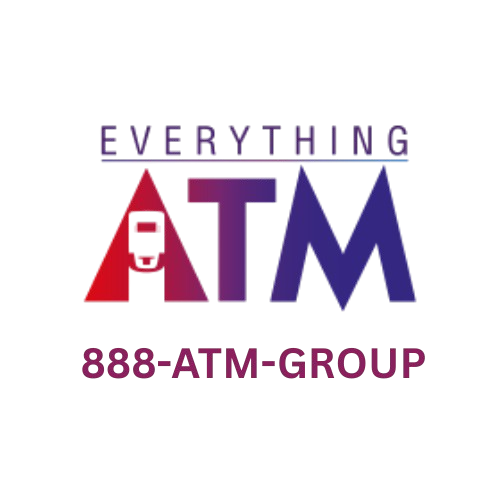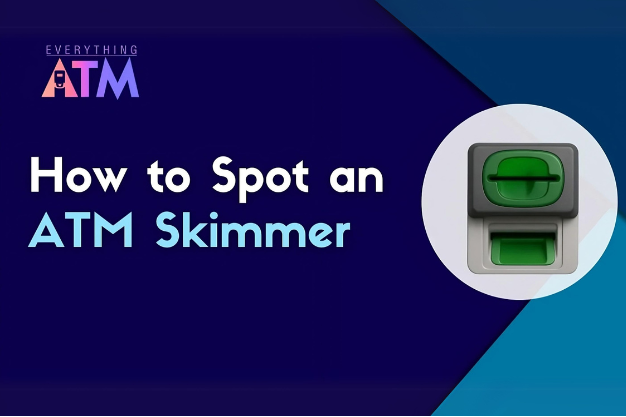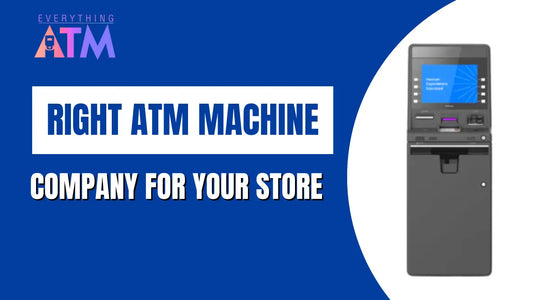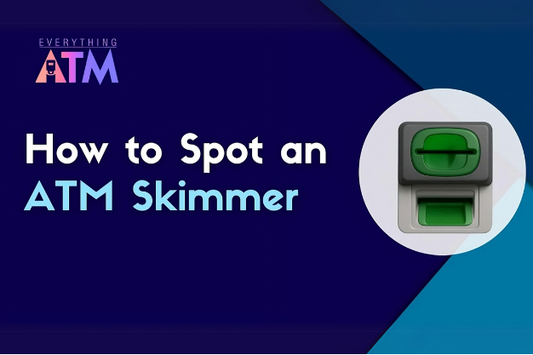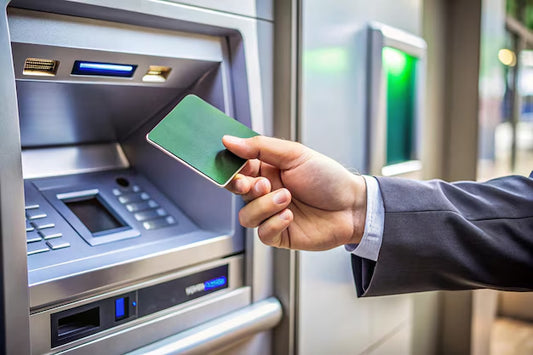ATM skimming is a growing threat to cardholders, leading to millions of dollars lost each year due to fraudulent transactions. Criminals use discreet devices to steal credit and debit card information, often without victims realizing it until it's too late. Understanding how to spot an ATM skimmer can help you protect your finances and avoid falling victim to fraud.
What is Skimming?
(Image: A close-up of a skimming device installed on an ATM card slot)
Skimming is a type of financial fraud where criminals install small, hidden devices on ATMs or card readers to steal card data. These devices copy the information from the magnetic strip on a debit or credit card when inserted into a compromised machine.
Scammers often pair skimmers with hidden cameras or fake keypads to capture PINs, allowing them to withdraw money or make fraudulent purchases.
How ATM Skimmers Work
(Different types of skimmers (e.g., card reader overlays, hidden cameras, fake keypads) near the bullet points listing how skimmers work.)
-
Card Reader Overlay – A fake device placed over the ATM card slot that copies card details..
-
Hidden Camera – Small cameras positioned near the keypad to record PIN entries.
-
Keypad Overlay – A fake keypad placed over the real one to capture keystrokes.
-
Bluetooth/Wireless Skimmers – Devices that transmit stolen data to criminals remotely.
How to Spot an ATM Skimmer
1. Physical Signs of Skimming Devices
(Image: A side-by-side comparison of a real ATM vs. one with a skimmer.)
When using an ATM, inspect the machine for anything unusual. Here’s what to look for:
-
Loose or Wobbly Card Reader – Try wiggling the card slot. If it feels loose or misaligned, it may be a skimming device.
-
Mismatched Colors or Materials – The card reader should match the rest of the ATM in color and texture. If something looks off, be cautious.
-
Thick or Unusual Keypad – Fake keypads often feel raised or softer than a normal ATM keypad.
2. Suspicious ATM Features
Some ATMs are more prone to skimming fraud, especially those in low-security areas. Be wary of:
-
ATMs located in isolated or poorly lit locations, such as gas stations or convenience stores.
-
ATMs with signs of tampering, like scratches, broken panels, or extra attachments.
-
Machines that ask for your PIN multiple times or display unexpected error messages.
3. Behavioral Red Flags
Skimming attacks are sometimes accompanied by suspicious individuals nearby.
-
Loitering individuals watching users enter their PINs.
-
Someone offering help while you're using the ATM, especially if they suggest reinserting your card.
-
ATM malfunctioning right after someone else uses it suspiciously.
How to Protect Yourself from ATM Skimming
1. Use Secure ATMs
-
Prefer ATMs inside banks, malls, or high-traffic areas over standalone machines.
-
Look for security cameras or guards near the ATM, as criminals avoid these locations.
2. Shield Your PIN
-
Always cover the keypad with your hand while entering your PIN.
-
Use a randomized finger movement when pressing keys to avoid pattern detection.
3. Monitor Your Bank Statements
-
Regularly check your account transactions for unauthorized charges.
-
Set up transaction alerts for unusual withdrawals or purchases.
4. Use Contactless or EMV Chip Transactions
-
Opt for tap-to-pay or mobile wallet payments instead of swiping.
-
Use chip-enabled cards instead of magnetic stripe transactions when possible.
What to Do If You Suspect an ATM Skimmer
1. Stop Using the ATM
If something seems off, do not insert your card. Choose another ATM instead.
2. Report the ATM
Notify the bank or business where the ATM is located. Most ATMs have a customer service number displayed.
3. Contact Your Bank Immediately
If you've already used a compromised ATM, call your bank to:
-
Freeze your card and request a replacement.
-
Check for unauthorized transactions and dispute any fraudulent charges.
4. Report to Authorities
-
File a fraud report with your local police department if your card details are stolen.
-
Alert organizations like the Federal Trade Commission (FTC) or your country's fraud protection agency.
Conclusion
ATM skimming remains a widespread threat, but knowing how to spot an ATM skimmer can help safeguard your personal and financial information. Always inspect the ATM for unusual attachments, stay aware of your surroundings, and take proactive measures like covering your PIN and monitoring transactions. By staying vigilant, you can prevent skimming fraud and keep your money safe.
Protect your ATM business with the best security solutions! Everything ATM provides high-quality ATM parts, security components, and expert guidance to keep your machines safe from skimming threats. Don't leave your ATMs vulnerable - explore their trusted products today!
